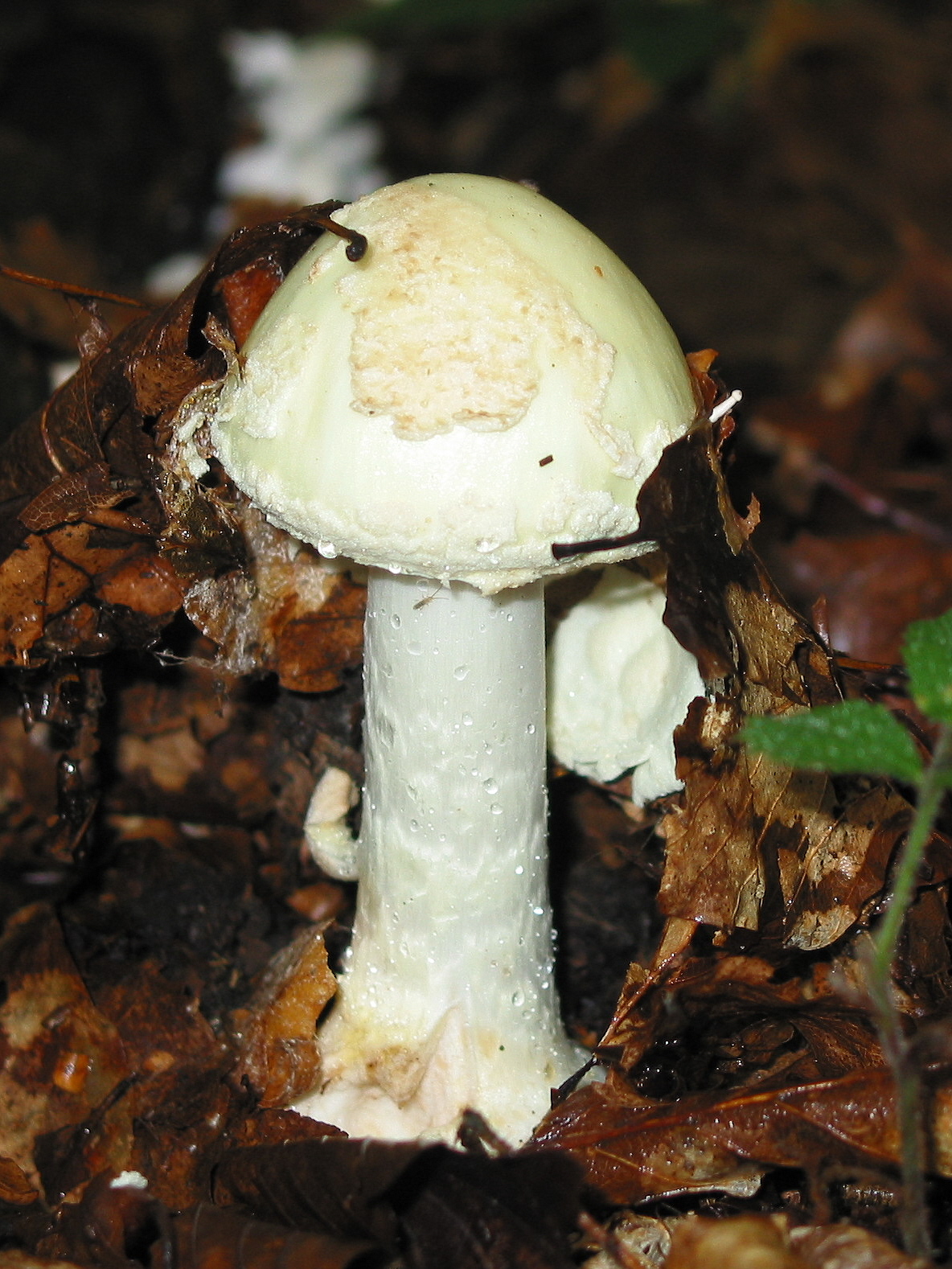- Amanita citrina
Taxobox

name = False death cap
regnum = Fungi
divisio =Basidiomycota
classis =Agaricomycetes
subclassis =Hymenomycete s
ordo =Agaricales
familia =Amanitaceae
genus = "Amanita "
species = "A. citrina"
binomial = "Amanita citrina"
binomial_authority = (Schaeff.) Pers., 1797mycomorphbox
name = Amanita citrina
whichGills = free
capShape = flat
hymeniumType= gills
stipeCharacter= ring and volva
ecologicalType=mycorrhizal
sporePrintColor=white
howEdible=edibleKnown as the false death cap, or Citron Amanita, "Amanita citrina" (previously also known as "Amanita mappa"), is a basidiomycoticmushroom , one of many in the genus "Amanita ". It grows in silicate soil in thesummer andautumn months. It bears a pale yellow or sometimes white cap, with white stem, ring and volva. Though it is not highly poisonous, its similarity to the lethal death cap ("Amanita phalloides ") precludes its use in cooking.Description
This mushroom has a fleshy pale yellow, or sometimes white, cap from 4–10 cm (1.5–4 in) across, covered in irregular patches. The
gill s and flesh are white. There is a large volva at the base of the 6–8 cm (2.5–3 in) tall stem, which has a clear ring. This mushroom is not eaten, having a smell ofrapeseed orpotato . It is often confused with the related death cap mushroom "(Amanita phalloides )", hence the name.cite book | author = P. Jordan & S. Wheeler | year = 2001 | title = The Ultimate Mushroom Book | publisher = Hermes House | ISBN = ]Distribution and habitat
The false death cap is found in
deciduous andconiferous woodlands in Autumn inEurope . It is also found inNorth American oak and pine forests.Toxicity
Scientific tests in the
University of Cambridge have shown that this mushroom contains thealpha-amanitin toxin. However, the amounts of this toxin were found to be very small and would not cause any adverse effects unless the mushroom was ingested in very large amounts. The biggest danger with this species is its marked similarity to the death cap, which is reason enough to avoid it, even though it is edible.References
External links
* [http://www.mushroomexpert.com/amanita_citrina.html Amanita citrina] on Mushroomexpert.com
Wikimedia Foundation. 2010.
